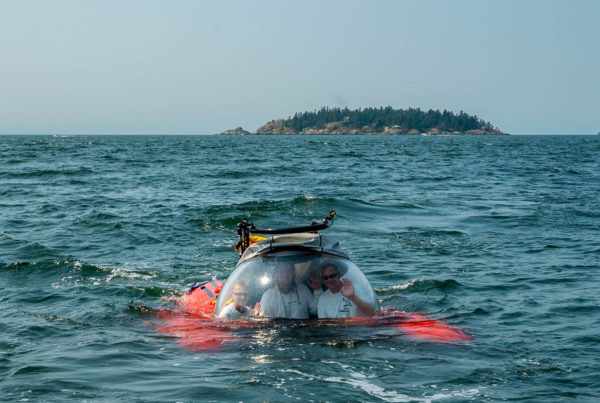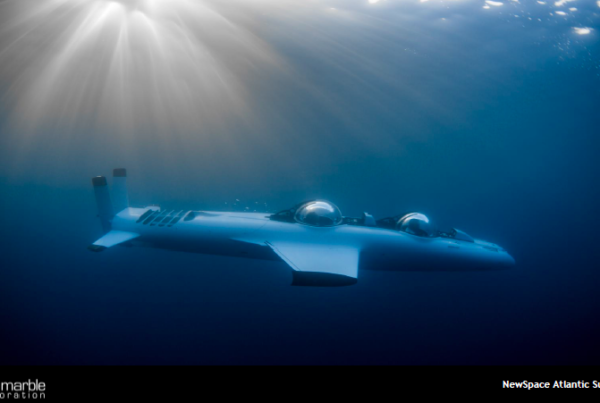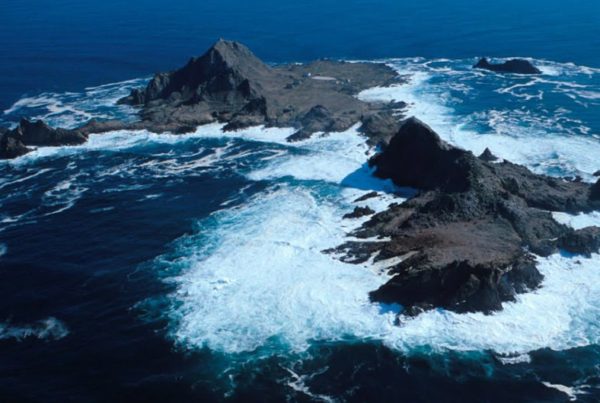In a vast ocean, the number of manned vehicles operating beneath the surface is very limited. Through my most recent expeditions funded by a National Geographic Young Explorer grant, I’ve learned that differences between subs allow each to serve as an ideal platform for research, exploration or filmmaking. These submersibles must conform to rigorous standards if they are to hold up against the varying temperatures and harsh pressures of the sea. Though all subs share the same few critical components including a pressure sphere (the cabin), life support systems, lights, and thrusters, each sub has unique characteristics and individualized operations. In a world of salt water, this keeps things fresh. Researching, filmmaking or collecting samples? There’s a submersible for that!
Antipodes — Seattle, Washington, USA
In a five-person sub smaller than a minivan, you might not expect any more legroom than an airplane, but the submersible Antipodes is surprisingly spacious. This 305 meter-capable sub, operated by OceanGate, Inc, shares the same critical specifications as similar vessels, but has something no other sub can boast: twin hemispherical domes. When you are submerged for many hours, they serve two valuable purposes: visibility and comfort.
Crewmembers sit on opposing benches deep in the domes, surrounded on three sides by the ocean. Only an IMAX experience evokes a similar sensation of total immersion. Whether flying over a sweeping landscape or in close quarters with a shipwreck, the pilot can simply rotate the sub to achieve a better view. Antipodes is by far the most comfortable sub I have been in, with plenty of overhead space and legroom, allowing more researchers, cameras and crew to collaborate on a dive.
CuraSub — Curacao, The Caribbean
While similarly allowing five people to dive to the deep, CuraSub differs in operations and onboard science equipment. A custom-built private marina houses the sub, its support boat, and workshop, and makes diving almost as efficient as going for a swim. The insightful designer of SubStation Curacao developed a floating dock that hugs the sub and not only allows for the easy transfer of crew, but also has an extra safety net built in. Below the surface, a platform underneath the sub ensures that if any water were to accidentally splash into the sub, the sub would still be supported from below and would remain safe and sound on the surface.
While the efficiency of dives is one clear benefit, the science equipment the CuraSub carries makes it a workhorse for underwater research. As a research platform, the sub is outfitted with two manipulator arms and various external cameras. One of the manipulators doubles as a fish sampling device complete with a water-soluble fish anesthetic to collect animals without harming them. Though CuraSub is typically operated from one location, the local area is so vast there is a continuous stream of both geological and biological discoveries.
Idabel — Roatan, Honduras
Outside the realm of traditional subs is the painstakingly homebuilt submersible Idabel. My dive in Idabel took me deeper than I’d ever been before, to the bathyal zone. Far below the photic zone where sunlight hits, the bathyal zone ranges from about 500 meters to 6000 meters and is home to creatures that never ascend into the daylight. Many of these creatures are wildly abundant, but they are so unfamiliar to our terrestrial lives that they become fascinating and bizarre. The biology of the deep ocean is one of the most glamorous and exciting worlds and Idabel is particularly suited to facilitating high quality photography and filming of deep sea organisms. The front of the sub even has protective bumpers, allowing the pilot to press right up against a rock wall and pick up a sample or go for a close-up with a camera illuminated by the many lights installed on the sub.
The rarity of diving this deep, and knowing I was still scratching the surface of the ocean, made Idabel my most extraordinary dive so far. I always knew I wanted to go into the deep ocean, but I never realized how dramatically it would change my goals for diving in the extraordinary world below us. Idabel can reach the black and quiet world of the deep sea, Antipodes is the perfect platform for underwater collaboration between many dive participants and CuraSub is outfitted for the safe and efficient collection of samples and data. With every dive on a submersible, you know you’ll be getting a million-dollar view, but it’s the differences between subs that make them uniquely valuable.
Photo credits: Barry Brown (First photo), OceanGate,Inc. (Antipodes photo), Erika Bergman (all other photos)
| Contributed by Erika Bergman Emerging Explorer Blue Marble Exploration Seattle, WA USA |








